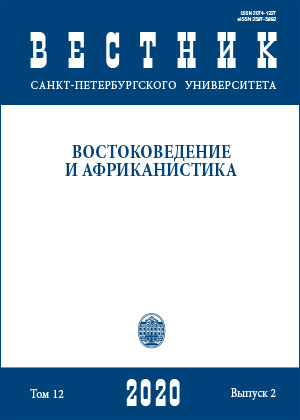Critical Discourse Analysis of the Image of China in the Russian Version of the Report on the Work of the Government with a Case of Russian Verb Aspects
DOI:
https://doi.org/10.21638/spbu13.2020.202Abstract
Aspect is an obligatory grammatical category of Russian verbs that consists of both perfective aspect and imperfective aspect as a pair. Based on both self-compiled Chinese-Russian parallel corpora of the Report on the Work of the Government (China) (2008-2017) and comparable corpora of the Report on the Work of the Government (Russia) (2008-2017), this paper presents the intra-lingual, inter-lingual and prosodic analyses of the image of China reflected in the Russian version of the Report on the Work of the Government (China): 1) image of China is created by comparing the verb frequency of two aspects in translational corpora and comparable corpora and analyzing the modal meaning and interpersonal function of Russian verbs; 2) ideology in the Russian version is discussed by comparing “V+了1” structures in source texts with its counterparts (long passive participles or imperfective aspect) in target texts; 3) main concerns of Chinese government in the past decade are illustrated by focusing on semantic prosodies of collocates (its types and distributions) with high-frequency imperfective verbs in target texts. It concludes that the image of China in translational texts is populist, flexible, responsible and concerned over its national welfare and people’s livelihood.
Keywords:
сritical discourse analysis, verb aspects, modals, language and government image
Downloads
References
Downloads
Published
How to Cite
Issue
Section
License
Articles of "Vestnik of Saint Petersburg University. Asian and African Studies" are open access distributed under the terms of the License Agreement with Saint Petersburg State University, which permits to the authors unrestricted distribution and self-archiving free of charge.





